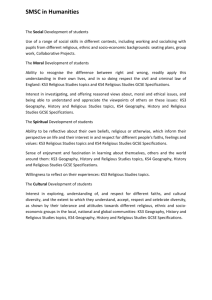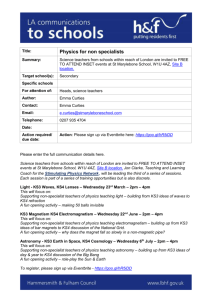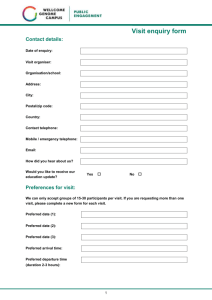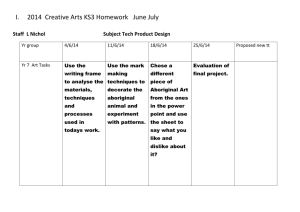Lesson Plan and Objectives
advertisement
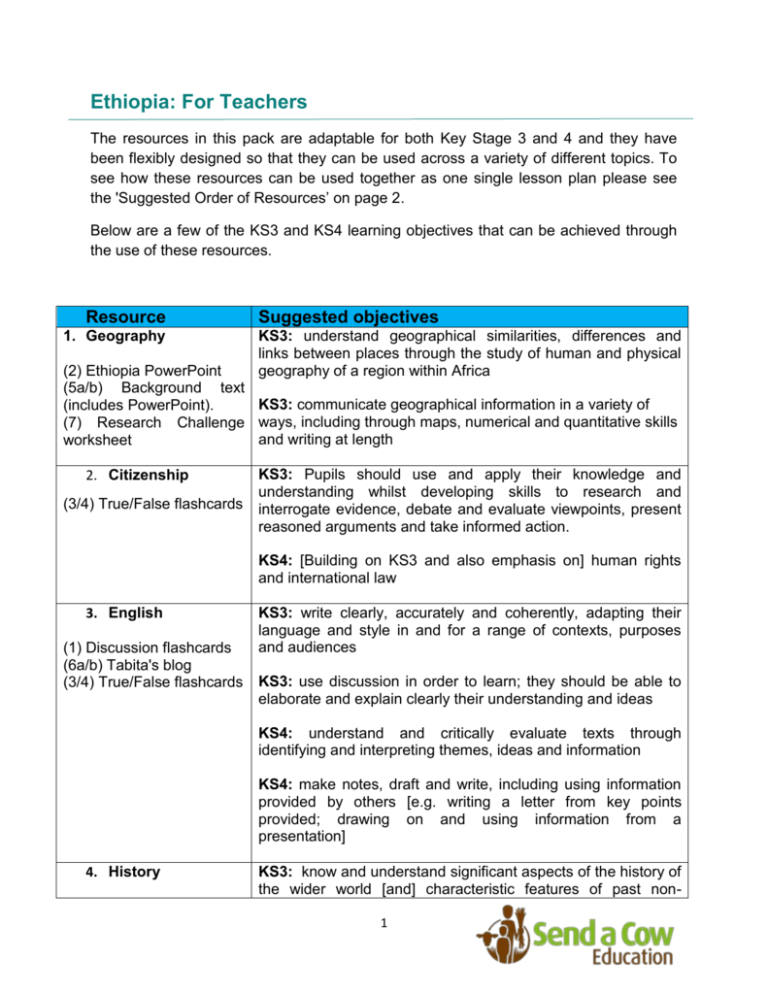
Ethiopia: For Teachers The resources in this pack are adaptable for both Key Stage 3 and 4 and they have been flexibly designed so that they can be used across a variety of different topics. To see how these resources can be used together as one single lesson plan please see the 'Suggested Order of Resources’ on page 2. Below are a few of the KS3 and KS4 learning objectives that can be achieved through the use of these resources. Resource 1. Geography Suggested objectives KS3: understand geographical similarities, differences and links between places through the study of human and physical geography of a region within Africa (2) Ethiopia PowerPoint (5a/b) Background text KS3: communicate geographical information in a variety of (includes PowerPoint). (7) Research Challenge ways, including through maps, numerical and quantitative skills and writing at length worksheet 2. Citizenship (3/4) True/False flashcards KS3: Pupils should use and apply their knowledge and understanding whilst developing skills to research and interrogate evidence, debate and evaluate viewpoints, present reasoned arguments and take informed action. KS4: [Building on KS3 and also emphasis on] human rights and international law 3. English (1) Discussion flashcards (6a/b) Tabita's blog (3/4) True/False flashcards KS3: write clearly, accurately and coherently, adapting their language and style in and for a range of contexts, purposes and audiences KS3: use discussion in order to learn; they should be able to elaborate and explain clearly their understanding and ideas KS4: understand and critically evaluate texts through identifying and interpreting themes, ideas and information KS4: make notes, draft and write, including using information provided by others [e.g. writing a letter from key points provided; drawing on and using information from a presentation] 4. History KS3: know and understand significant aspects of the history of the wider world [and] characteristic features of past non1 (5a/b) Background text European societies (includes PowerPoint) KS3: Rights and responsibilities as members of diverse 5. PSHE communities, as active citizens and participants in the local and (5a/b) Background text national economy (includes PowerPoint) Suggested Order of Resources The purpose of this unit is to give an introduction to the marginalise communities of Ethiopia, with a particular focus on the area of Wolaita in the south. This resource covers a variety of different areas, including geography, history and PSHE. For an idea of how these resources fit in with different areas of the National Curriculum for Key Stage 3 and 4, please see the 'Lesson Objectives' document. You can use many of these resources as stand-alone activities in your wider topic, or you can use them as a continuous lesson plan to explore Ethiopia's marginalised communities. Below is the order that we suggest these resources should be used in: Resource Activity Discussion flashcards A set of 6 flashcards covering a variety of topics, an ideal starter activity to spark discussion Ethiopia PowerPoint A PowerPoint giving some information about the history and geographical location of Ethiopia (also includes discussion points) True/False A set of flashcards featuring 6 true statements and 6 false statements about what Ethiopia is like Background text A page of text about the history of Ethiopia's marginalised communities and an accompanying PowerPoint with discussion points. Tabita's blog A piece of text from a real blog in Ethiopia 2 and a worksheet encouraging pupils to write their own blog from Tabita's perspective. Research challenge A fact-finding activity about Ethiopia. This could be used as a starter activity or as a homework exercise. 3


